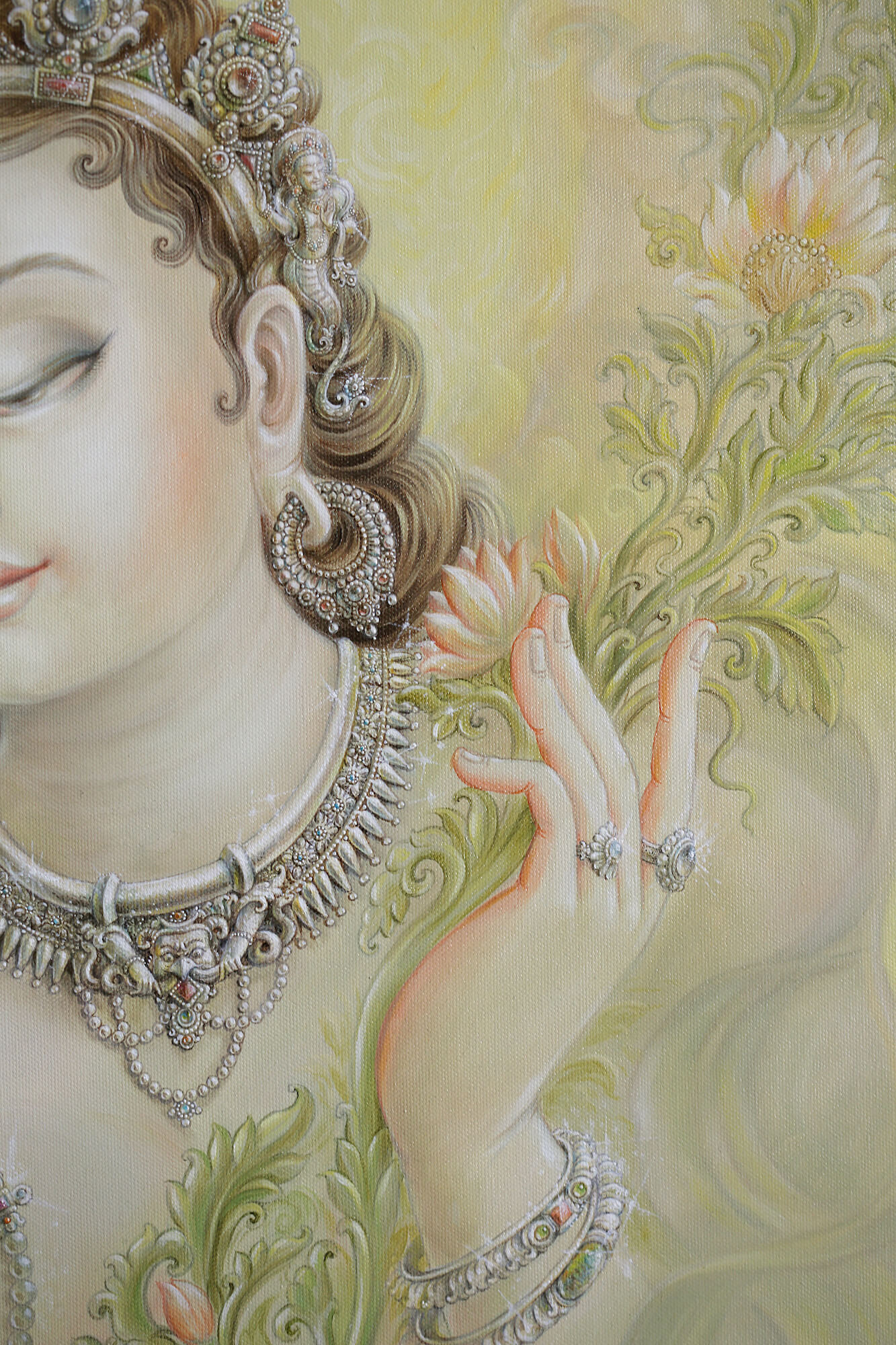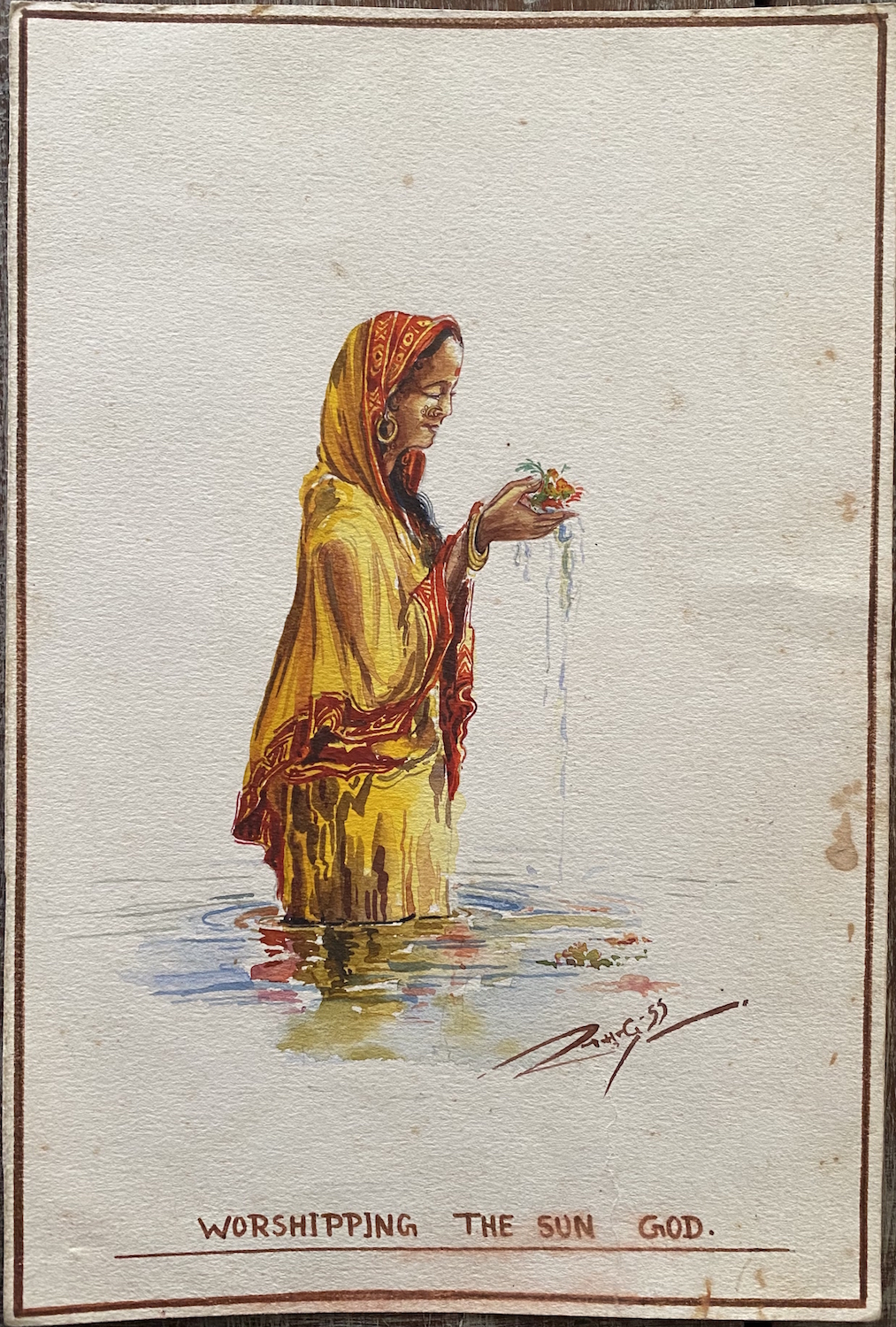The compassionate White Tara
Samundra Man Singh’s art show us the importance of the eternal questions of existence, impermanence and compassion
Samundra Man Singh Shrestha began his career in art when he was only 14, and today he is one of the most sought-after Nepali artists by museums, galleries, collectors and monasteries all over the world. His expressionism has inspired a whole new generation of young artists, and prints of his work are found in prayer rooms of private homes, business centres and spiritual establishments.
Shrestha’s sketches, watercolours, paubha, neo-traditional and conceptual works are known for their own unique style that transforms and communicates the most complex ideas into approachable and relatable visual manifestations. Indeed, Shrestha’s style and methods are imitated by many Nepali and international artists.
Shrestha himself views these works as compliments to his craft, style and aesthetic sensibility. (Samundra means 'ocean'). An unveiling of his new paintings are always a highly anticipated affair in the art community.
Saptalochani, or the White Tara, is one such work. Spectacular and beautiful, it represents a new era of Shrestha’s œuvre. A variety of emotions emerge, from surprise to awe, when viewing this masterpiece, culminating in a sincere understanding that with this painting, Shrestha has indeed redefined beauty once again.
A prominent feature of any masterpiece is not just its aesthetic magnificence but the way it provokes our innermost feelings at an intimate level. When contemplating Saptalochani, one is immediately immersed in a calming wave of quietude.
Shrestha’s confident, effortless and surrealistic brush strokes can be seen in his linework, the rhythmic flow and blend of colours. What one sees is not just a drawing of a beautiful deity representing compassion and contentment, but a visual expression of Shrestha’s lifetime of experience and learning. The mind, body and soul resonate with this osmosis of gentle spiritual energy touching the inner self, elevating one’s consciousness.
I.M.A.G.I.N.A.T.I.O.N by Uttam Nepali, Rajan Shakya


The White Tara is a symbol of love, compassion and beauty, and Saptalochani as a work of art reminds the viewer to appreciate that, and to be humble, grateful and compassionate ourselves -- to be mindful of the pain and sorrow of those around us.
But understanding just the meaning of the word, or only asking what we can do to be more compassionate do not make us better persons. We must also implement our understanding and findings into actions to help another being overcome their miseries without expecting anything in return. Shrestha communicates the essence of compassion through his art.
The ancient teachings and paintings of the White Tara are strict on iconography, and we can find perfect depictions of the deity in paubha, thangka, idols, temples and monasteries in Nepal. Iconography is the visual language through which a spiritual art is communicated.
However, as with all works of art, there is a question of how one can pass down the knowledge of this language from one generation to the next, retaining the same level of intensity, emotion and faith.
Jeevan Rajopadhyay’s Untitled, Rajan Shakya
The answer perhaps can be found in Shrestha’s style and creation. His detailed knowledge of the White Tara is prominent in the painting’s simplicity, subtlety and beauty. In these qualities he has poured his emotions and love, expecting nothing in return.
Many artists paint for money, but Shrestha takes it a step further in communicating what is important and what might be lost as we grapple with modern lifestyles. He shows us how to express and understand the impermanence of beauty.
Viewing Shrestha’s work makes it clear that the key to a peaceful life can be found in creating art, sharing it, and then letting it go. While a masterpiece may relate to individuals in personal ways, looking at it through the artist’s eyes helps us identify with the artist rather than just relating it to our own life experiences.
This helps us develop compassion for the artist’s craft and style, something we are often tempted to overlook. Art styles can emerge from an infinite number of sources, and continuously transform. There are many external forces that bring about such changes such as war, famine, disaster, which may be easily recognised.
N A R Ì by Mukti Singh Thapa, Rajan Sakya


However, there are internal influences as well, such as personal grief, experiences that are not obvious. Yet, artists are moved by their surroundings and their feelings, and it is through their art that they express them.
Shrestha’s White Tara invites us to participate in this shared experience, uniting both the artist and the viewer in a peaceful and compassionate embrace. The essence of art is that it should be provocative and inspire viewers and artists to engage in discussions, and lead to an understanding of our place in this world.
Let us hope that Samundra Man Singh’s art satiates our hunger to delve further into art and the eternal questions of existence, impermanence and compassion.
Read also: Lain Singh Bangdel’s ‘Sigh’, Rajan Sakya
Rajan Sakya is the founder of the Museum of Nepali Art at Kathmandu Guest House, Thamel and contributes this monthly column For Art’s Sake in Nepali Times.
Museum of Nepali Art will be displaying Samundra Man Singh Shrestha’s work in a solo exhibition from 28 January to 15 February 2022 at Kathmandu Guest House, Thamel.

writer




